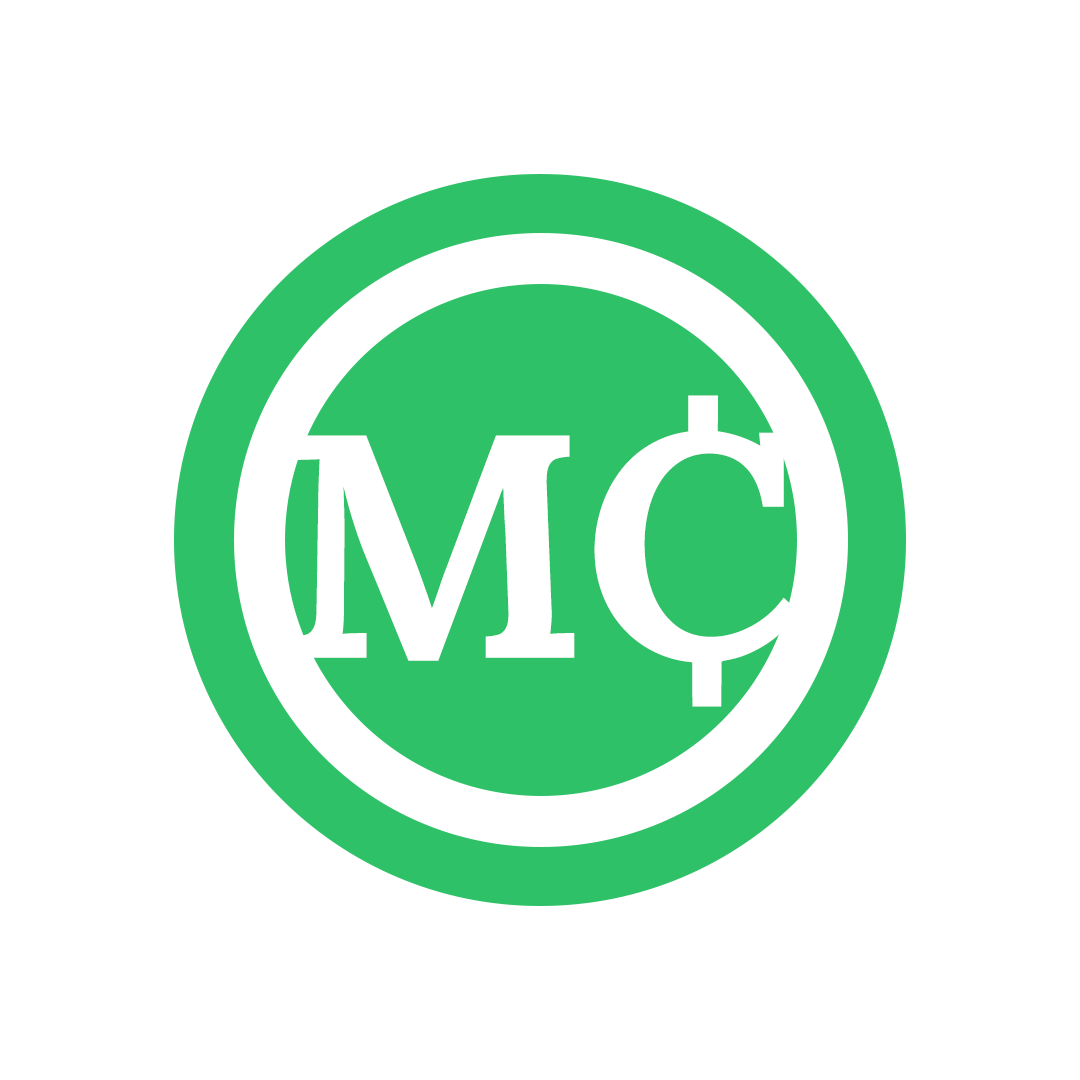Anúncios
job opportunities success stories show what actually worked in the market and help you turn clear steps into your own approach.
Have you ever wondered which moves lead to real raises, remote roles, or role changes without extra certifications? This intro pulls real outcomes — $15K–$40K raises, offers at Salesforce, Google, TikTok, Sephora, and a $30K budget increase for a custom role — into practical lessons you can test.
You’ll get a preview of focused applications, tailored resumes, interview tactics, negotiation tips, timelines, and public programs like WIOA, EARN, LEAP, and SkillUp PA. Mentorship and community helped many move into CSR, clean energy, and supplier diversity roles with better pay and balance.
Realistic expectation: these examples are toolkits, not scripts. Use the advice, adapt strategies to your context, and treat mentorship as a way to speed learning rather than a guaranteed outcome.
Introduction: Why job opportunities success stories matter in your search
Short timelines and clear tactics in recent hires point to what employers value now. You can use those patterns to shape a smarter search without overhauling your life.
How recent wins reveal what’s working
From 2023–2024, candidates earned $20K–$70K bumps, landed remote roles, and moved into tech, clean energy, and CSR. Programs like WIOA and EARN helped close gaps fast, while PA CareerLink Lehigh Valley reported youth CDL and IT pathways that shortened timelines.
What you can realistically apply
Try two or three tactics this week: rewrite bullets to show measurable results, start value-forward networking, and use short courses or a program to bridge a skill gap.
- Expect better interviews within weeks and offers in months.
- Negotiate early to align pay and flexibility.
- Lean on coaching and community for steady weekly action.
Remember: results vary by experience, skills, and persistence. Use these lessons as tools, not guarantees.
job opportunities success stories
Concrete moves—rewriting bullets, targeting industries, and steady peer feedback—changed compensation and work for many people.
From nonprofit to CSR: a nonprofit director reframed program metrics as business KPIs, applied to just over 10 targeted postings, and landed a CSR/social impact position with a $37K salary increase.
Focused strategies at top firms: candidates sharpened resume language and interview stories for a clear position. That led to offers at Salesforce (Program Manager, +$25K and $8K bonus) and Google (Supplier Diversity PM, +$70K total comp and $20K sign-on).
- Highlight outcomes over tasks to translate nonprofit impact into business value.
- Apply fewer, higher-quality submissions to save time and increase responses.
- Map past initiatives to new KPIs with a simple template so hiring teams see the fit.
- Use peer review to build confidence and tighter interview stories.
- Collect small wins—remote days or signing bonuses—for meaningful life benefits.
Tip: document weekly wins so your positioning stays current and specific as you move from exploration to execution.
Career pivots that worked: Real paths from one field to another
Changing lanes professionally begins with translating familiar tasks into measurable outcomes for a new role. Below are concrete steps and quick artifacts that helped three people make clean pivots without long credential gaps.
Account Management → Project Management (no PMP)
An account manager mapped client portfolios, timelines, and stakeholder work to core PM competencies. They used impact-focused resume bullets, short project summaries, and delivery stories to land a Sr. Project Manager role with a +$34K package and relocation support.
Human Resources → Communications
During the pandemic, an HR pro packaged storytelling, change-management wins, and internal comms samples. Writing clips and measured outcomes showed transferability and led to higher pay in a communications position.
Public Health → Marketing & Consulting
A public health specialist updated LinkedIn keywords and a portfolio. Recruiters reached out the next day and a new role added +$25K. Short courses and a clear translation grid made tasks read like marketing outcomes.
Practical tip: pick one project that mirrors the target position, document weekly wins, and practice concise narratives to build confidence.
The hidden job market: Creating opportunities where none existed
Hidden roles often appear when you show a clear plan that solves a current business pain.
One candidate found a role that wasn’t posted. Their tailored proposal showed impact and persuaded the employer to raise the budget by $30K. Another person framed a plan for an emerging business area and saw a new role created with a 20% pay increase.
How a company raised its budget by $30K for the right person
Lead with value, not a resume. Send a one-page brief that outlines the problem, your proposed solution, and projected metrics. That clear fit makes managers justify extra spend fast.
Networking that led to custom roles and faster offers
Informational interviews create internal advocates who point you to real needs. Set small weekly goals—warm intros, five direct messages, and two one-page briefs each week—to build momentum in a few weeks.
- Script: open with a quick value statement, one problem you can solve, and offer a 15-minute call.
- Package: one-page brief showing scope, metrics, and past wins.
- Track: use a simple spreadsheet to follow conversations and next steps.
“Approach networking as solving problems for others, and you create real opportunity and durable relationships.”
Integrate this with posted applications and LinkedIn updates to trigger inbound interest. Over time, this method uncovers roles that never reached the careers page and helps you shape the work and life you want.
Confidence, clarity, and coaching: The support that accelerates change
When you can name the value you bring in one sentence, interviews stop being stressful and start being productive. Clear framing gives you a repeatable map to answer tricky questions and link past wins to future impact.
Building confidence to speak your value in interviews
Practice a 60-second story arc that hits problem, action, and result. This turns nerves into a concise narrative hiring teams remember.
Use interview prep documents and email templates that raised reply rates in testimonials. Mock interviews surface blind spots and build muscle memory.
Community and accountability to stay consistent over months
Peer check-ins and simple weekly scorecards keep momentum through slow months. Participants in job clubs and advisor programs reported multiple offers, better sleep, and improved quality of life after landing aligned roles.
- Map talking points to three value pillars so your answers stay focused.
- Schedule short, recurring work sessions to avoid burnout.
- Use coaching frameworks to reduce guesswork and focus on high-impact tasks.
“Structured steps, templates, and steady feedback turned outreach into offers for me.”
Public workforce programs that open doors
Public workforce programs can turn a plan into real training, support, and employer connections. They give structured steps you can follow while you build skills and contact local employers.
WIOA and EARN: Structured steps, training, and placement
WIOA-funded services include assessments, training vouchers, and work-based learning that link you to employers. EARN helps SNAP-eligible participants with readiness, placement, and wraparound support.
PA CareerLink Lehigh Valley: Youth, adults, and veterans
PA CareerLink runs ISY/OSY pathways with work-based learning, SkillUp PA online training, and LEAP pre-release options. In 2023–2024, youth entered CDL and IT pathways, and veterans joined job clubs with daily staff advisors.
- What staff do: intake, eligibility review, and daily advising to navigate postings and training.
- What you get: assessments, vouchers, case manager contact, and employer-aligned training.
- How to start: bring ID, proof of benefits, and school or employment records for faster intake.
“Staying engaged with your case manager and combining program support with your own networking speeds placement.”
Tech and AI roles: From data entry to IT and program management
Moving from data entry into IT or AI program roles is more about translation than starting over. Small, targeted credentials and clear examples of impact can make you a strong candidate quickly.
Breaking in with certifications and targeted interview prep
Start with entry-level certs like CompTIA A+ to validate baseline skills for help desk and support positions. Marko used WIOA in June 2024 to access training and move from data entry into IT roles.
Turn accuracy and systems experience into concrete value. Show process improvements, error rates, or time saved to make your background read like technical prep.
AI-focused project management in clinical trials
Prepare PM artifacts: risk logs, timelines, and stakeholder updates with metrics. One candidate used that portfolio to land a Project Manager position at an AI clinical trials company with a +$25K increase and 100% remote work.
- Compensation: study base, equity, and signing bonuses—Google-level offers show wide variance in total pay.
- Practice: set short weekly drills on behavioral and scenario questions so you improve within weeks.
- Pitch: use a project portfolio to present your contribution even when your title didn’t include “manager.”
Combine targeted applications, referrals, and program support to speed interviews. Be ready to discuss benefits and learning budgets during negotiation so you secure both pay and growth. With focused steps you can move into the tech world faster than you expect.
Clean energy, CSR, and social impact: Values-driven careers
Values-driven roles often pair clearer purpose with practical pay gains when you target the right employers.
Real outcomes: one clean energy Marketing & Comms Manager moved to a fully remote role and saw a +$20K increase. A nonprofit leader translated program KPIs into business value and landed a CSR position with a +$37K raise and better cultural fit.
How to research and position yourself
Research climate-tech firms and tailor messaging to their audience. Use impact metrics, stakeholder examples, and concise stories that show measurable outcomes.
What to test in interviews and offers
- Ask about remote policies, scope, and benefits so expectations match your life.
- Reference CSR reporting frameworks and simple metrics in answers.
- Use back-channel references to test cultural alignment before you accept a role.
“After moving into mission work I felt more balanced and made more money within a few years.”
Use a short values worksheet to sort pay, growth, and meaning. Build a target list in energy, sustainability, and social impact to focus your outreach and find better job opportunities.
Healthcare pathways: From CNA to allied roles
Healthcare pathways often start with hands-on roles that open routes to allied careers in months, not years. Start by mapping local training, employer tours, and program supports so you can plan clear next steps.
Training support and employer tours that build confidence
WIOA-funded options helped people move from CNA classes into broader clinical tracks at PA CareerLink Lehigh Valley. Staff advisors set intake, connect you to approved school courses, and arrange employer tours.
Employer visits show roles beyond bedside care—EMT, medical assistant, and technical tracks. Seeing the day-to-day builds confidence and helps you choose a path that fits your life.
Apprenticeships and on-the-job experience that translate to offers
Apprenticeships blend classroom time and paid work so you earn while you learn. Luis finished the classroom portion and now works in Paratransit after on-the-job training and local partner support.
Case managers track timelines, often months from intake to placement, and help you set milestones for credentials and hours. Combine program resources with networking and community supports for childcare or transport to keep momentum.
- What you’ll get: WIOA funding or referrals to approved training.
- How it helps: employer tours and apprenticeships translate skills into hireable experience.
- Next steps: practice patient-care stories for your resume and interviews to show reliability and measurable patient outcomes.
“Use staff advisors and short exposures to test roles quickly; small steps add up into real career shifts.”
Transportation and skilled trades: CDL as a fast track to stable work
Driving into a CDL pathway can turn short-term training into a stable paycheck and clearer routines at home.
How youth and OSY programs structure the pathway: WIOA and OSY often cover training, permit fees, and testing. Case managers schedule classes, practice drives, and employer meet-ups so you move from learning to interviews faster.
Youth programs guiding CDL training and placement
Participants like Mohamad (Sept 2023) and Andy (early 2024) used program funding and weekly practice plans to pass permits and road tests. Expect a weeks-to-months timeline from enrollment to placement depending on testing slots and math basics you may need to review.
New fathers leveraging OSY support to raise income
Jose (Aug 2023) used OSY advising to balance days on the road with family life while securing consistent pay. Case managers set employer introductions and helped negotiate start dates that fit childcare routines.
Practical steps to follow now:
- Build a weekly study schedule: permit quizzes three days, behind-the-wheel drills two days.
- Track progress in a simple log: applications, test dates, endorsements, and interviews.
- Discuss route types with advisors—local, regional, or long-haul affect days away and benefits.
- Budget for early costs: exam fees, medical checks, and temporary childcare until pay stabilizes.
- Prioritize safety and compliance training to stay employable for years.
“Use your case manager to connect with employers early and test routes that match your life rhythm.”
Veterans, reentry, and second chances: Earning stability and purpose
Many veterans and people reentering society find steady work when they connect to structured support and peer networks. These steps are practical and realistic. They focus on clear milestones and daily advising.
Air Force example: an Air Force veteran attended the Veterans Job Club on 4/15/24 and met CareerLink advisors to map next steps. Advisors helped translate service tasks into civilian language and set short timelines for applications.
Pre-release training that reduces recidivism
LEAP runs structured activities that link pre-release planning to employer introductions. SkillUp PA offers online courses you can take inside and after release to refresh marketable skills.
- You’ll learn how veterans job clubs connect you with employers and peers who understand service backgrounds.
- You’ll assemble documents and references early so applications move fast when you are ready.
- You’ll coordinate with staff for targeted employer introductions and transport or housing support through local partners.
- You’ll practice interview answers that show accountability and growth while using strengths like discipline and teamwork.
“Daily CRC advisor interactions mean hands-on help—one meeting can reshape your plan and keep momentum.”
Track progress weekly, celebrate small wins, and lean on community mentors as you rebuild stability. With structured programs and steady staff support, you can move from planning to paid work within months and reclaim purpose in the world.
Campus career growth: UC Berkeley staff stories
On large campuses, small acts of visibility often become the clearest path to internal advancement. UC Berkeley staff used mentoring, committee service, and volunteer roles to move across units and gain new pay and scope.
Mentoring, community, and internal mobility in higher ed
Find a mentor who knows hiring lanes and can vouch for your work. Join staff groups and committees to meet decision-makers and widen your internal network.
Volunteer for short-term projects so you build a portfolio of process improvements. Map those wins to department goals so promotions feel like a natural fit.
- Use informational interviews to learn pathways between units.
- Tap development programs and tuition benefits to upskill quickly.
- Create a three-year plan with milestones that show measurable change.
“Visibility plus clear contributions led to promotions across divisions.”
Apply these steps in any large institution. Over a few years, you’ll expand your network, sharpen your portfolio, and find internal opportunities that match your career goals.
Practical networking moves from these stories
Start small: reach out with a single helpful idea that shows you understand the team’s current priorities. That simple step turned a LinkedIn update into inbound contact the next day for one candidate.
Value-forward outreach that earns replies and referrals
Write a one-paragraph message that links a past win to a current problem. Include a quick metric, a suggested first step, and a clear ask: 15 minutes to compare notes.
LinkedIn updates that trigger recruiter interest within days
Update your headline and three bullets with outcomes and keywords. People reported recruiter messages within days or weeks after making these edits.
Relationship building with hiring managers and peers
Talk about problems, not openings. Share a brief case study you can attach, and ask for advice or an intro rather than a favor.
- Weekly rhythm: two tailored messages, one follow-up, one post or comment.
- Track: log replies and refine templates that get the best rates.
- Avoid: mass generic messages and vague asks.
“Help first, ask second — that’s how real connections form.”
Resumes, interviews, and the “best version” of you
Make your resume and interview prep work together so you present as the person who can start fast.
Tailor bullets that translate achievements across fields. Convert tasks into achievement lines that show scope, action, and result. Mirror the target job language but keep your voice honest.
Tailored bullets that translate achievements across fields
Use a three-part formula: scope → action → result. One clear example helped candidates move into CBS and Sephora roles after focused edits.
Interview prep that turns nerves into clear, concise narratives
Assemble three STAR stories and practice 30–60–90 second answers. Rehearse compensation and benefits questions so you sound prepared and calm.
- Show relevant skills and one measured experience per bullet.
- Address pivots with honest, strategic framing and a short portfolio leave-behind for the position.
- Use mock interviews to build confidence and cut filler words.
“Short, practiced stories made interviews feel like conversations about fit.”
Finish each interview by summarizing the value you bring and asking clear next steps. These small things shift how hiring teams see your fit and your ability to do the work from day one.
Negotiation wins: Salary, bonuses, benefits, and flexibility
You can shape an offer to match your life priorities by preparing a short, value-led case.
Start with a one-page business case that ties your ask to measurable impact. Use past metrics and a clear ask for base, bonus, equity, or relocation support.
Securing raises, signing bonuses, and flexible schedules
Reportable wins included +$15K–$40K raises, an $8K bonus at Salesforce, and a $20K signing bonus at Google.
Practical steps you can use
- Time your ask after a verbal offer but before final acceptance.
- Script calm, collaborative language your manager will respect.
- Research market data so your targets are grounded and realistic.
- Propose flexibility: remote work, four-day weeks, or adjusted start dates.
- Get the final agreement in writing and align terms with your life priorities.
“Holding multiple offers helped some candidates negotiate better pay and shorter weeks without risking the position.”
Timelines, momentum, and mindset: What to expect
A clear plan speeds interviews, yet durable change comes from steady effort over weeks and months. Expect some quick signals and longer waits at different stages of the process.

From weeks to months: Staying consistent through the search
Candidates reported interviews within a few weeks after gaining clarity. Many offers arrived over months after regular outreach, prep, and follow-up.
Practical plan: map a 90-day rhythm that balances applications, outreach, and short skill refreshers. Set weekly goals and clear review points to adjust fast.
- Keep micro-actions for slow months to maintain momentum.
- Track inputs, not just outcomes, to build confidence and learning.
- Use feedback from interviews to sharpen your narrative each week.
- Schedule recovery time so you avoid burnout and stay effective.
- Reassess targets quarterly so your efforts match demand and long-term goals.
“Compound effort across weeks and months is the point: small, steady steps make big change over time.”
Conclusion
Treat your search like a short project: pick a few tactics, measure results, and iterate. Keep a strong, simple tracker so you see progress over time and refine what works.
Real examples show meaningful gains when you combine focused outreach, public program support, and steady effort. Use mentors, community, or professional advice when you need faster feedback.
Choose steps that fit your values and daily life. Track wins, document what changed, and keep testing—small actions compound into long-term career and life improvements.



